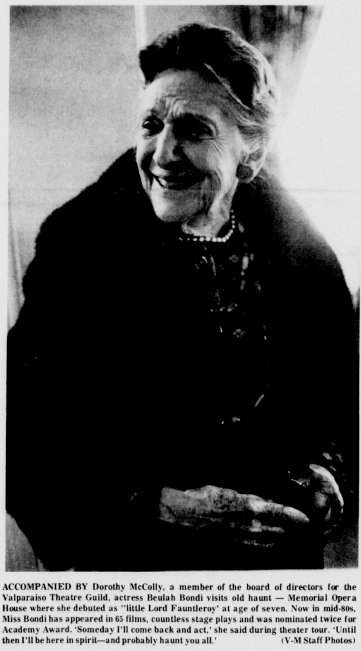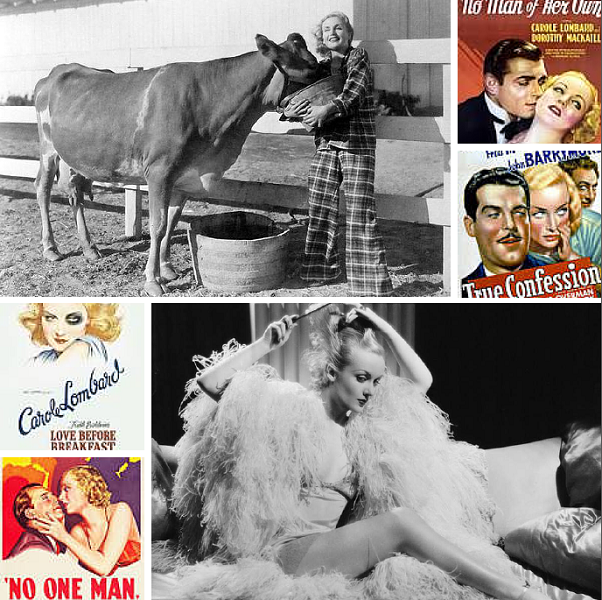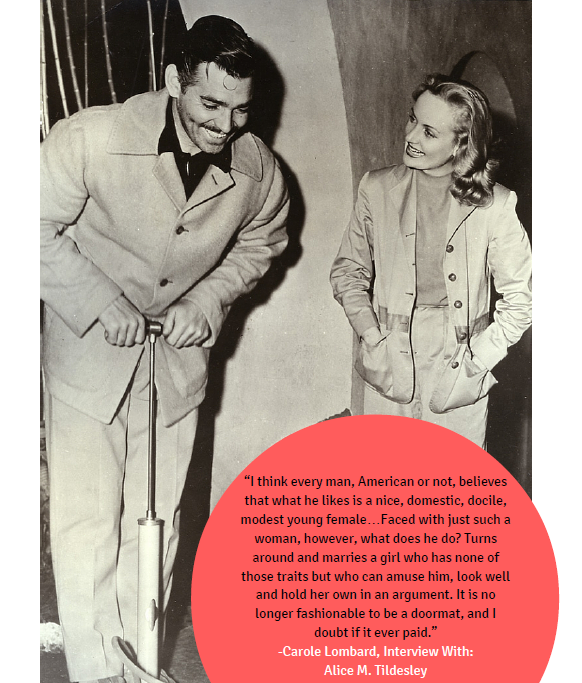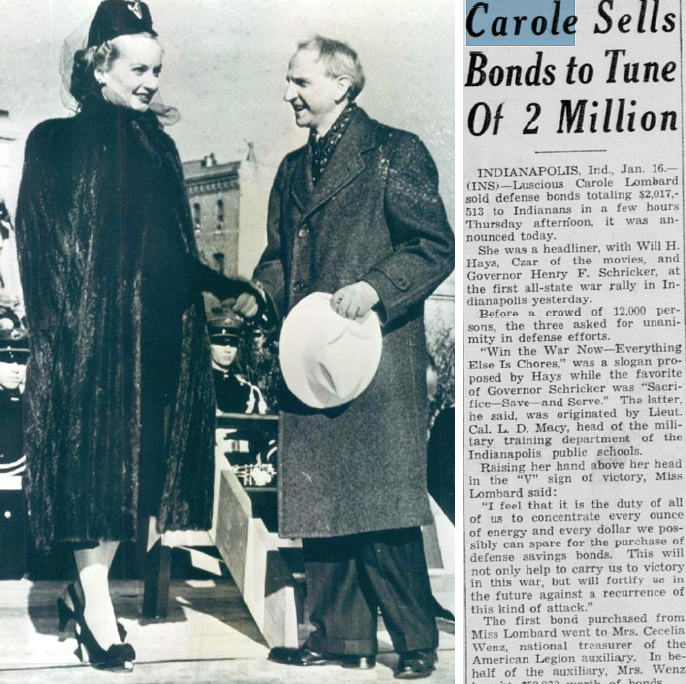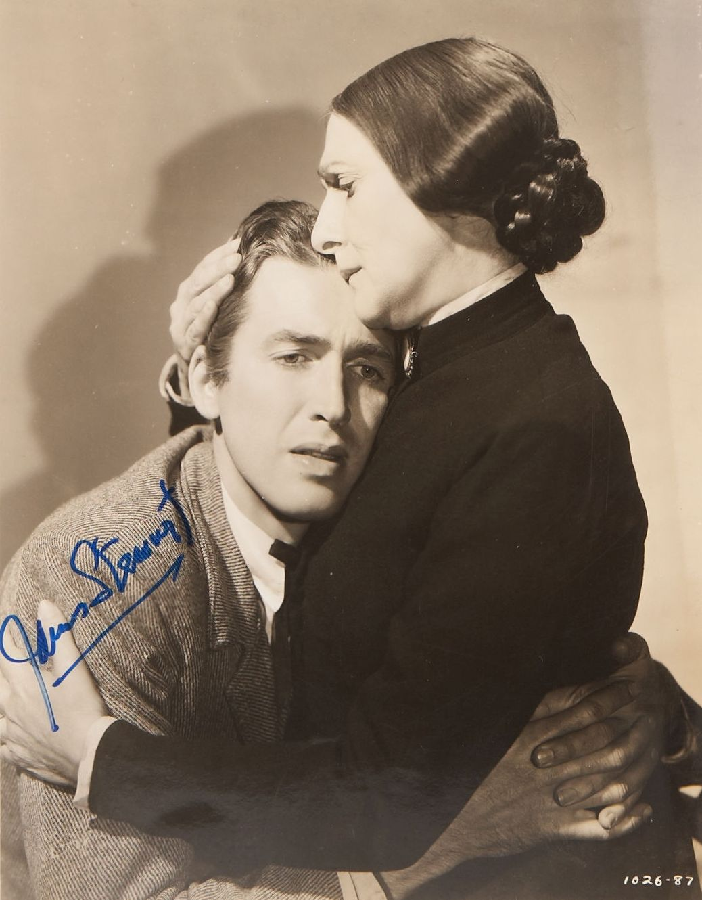
Beulah Bondi’s is not a recognizable name today, but her face certainly is. You’ve likely seen it in classics such as It’s a Wonderful Life and Mr. Smith Goes to Washington. The Valparaiso, Indiana native portrayed Jimmy Stewart’s mother four times on film, including Vivacious Lady and Of Human Hearts, in addition to Wonderful Life and Mr. Smith. According to the Chicago Daily Tribune, Stewart affectionately called Bondi “Mom.” By the ripe old age of 39, Bondi was cast to play characters well beyond her age and she became the equivalent of “Hollywood’s mother,” despite herself never marrying or having children.
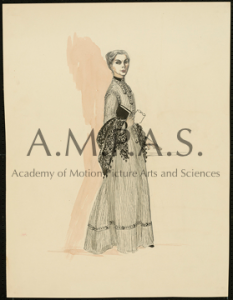
“America’s greatest character actress,” according to United Artists, MGM, and Paramount, was born Beulah Bondy in 1888. She got her start at the age of seven as “Little Lord Fauntleroy” at Valparaiso’s Memorial Opera House. After the lead actress fell ill, she had one week to memorize 47 pages worth of lines and became hooked on acting after delivering them on the stage. The young actress was drawn to “dramatics” and the stage throughout her public education, including her time at the Convent of the Holy Name and Valparaiso University.
After graduation from university, she traveled the Midwest with a theatrical touring company. The Valparaiso Vidette Messenger reported that she changed her last name to “Bondi” at the suggestion of an Indianapolis journalist. Bondi noted, laughing, that “‘He said all of the letters in my name should be above the [credit] line.”
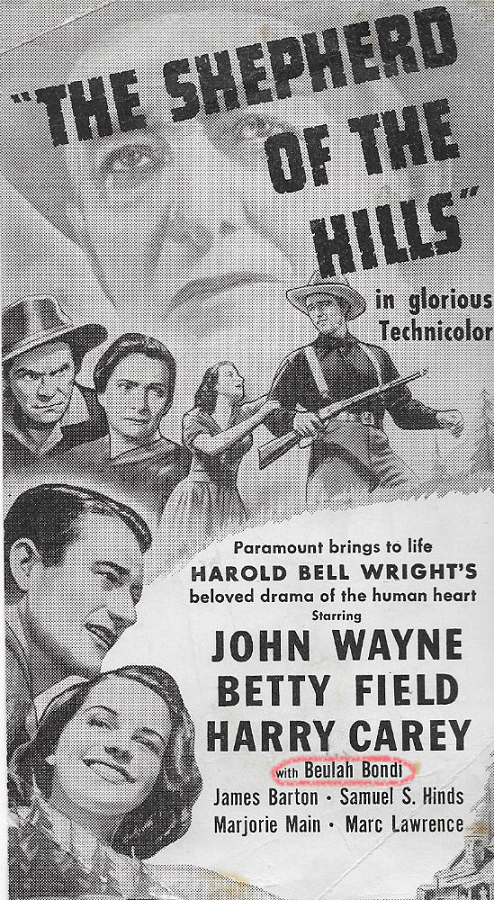
Following her work with an Indianapolis stock theater company, Bondi began her professional acting career in 1919. She was promptly informed by her first director that she “‘had no more talent than on the head of a pin.'” This criticism equipped her to endure even the most difficult directors of stage and film. In 1925, Bondi made her Broadway debut, beginning a prolific Broadway career that would eventually deliver her to Hollywood acclaim. According to the Valparaiso Vidette Messenger, film producer Samuel Goldwyn viewed her Broadway performance as a bigoted neighbor in the three-year run of Elmer Rice’s “Street Scene” and brought her to Hollywood.
From “dowagers to harridans,” Bondi deliberately chose character work, embodying each of the characters she played. In 1929, the Valparaiso Vidette Messenger printed excerpts of colorful New York reviews of Bondi’s portrayals:
“As a catty and scandal mongering neighbor Miss Beulah Bondi never overplays a role that would tease a lesser actress to do so.”
“Beulah Bondi who was so good in ‘Saturday’s Children’ and so amusing in ‘Cock Robin,’ turns out a gossipy busy body with remarkable detail and rare effect.”
In “Street Scene:” “the comedy relief is intrusted [sic] to the greatest character actress in America, Beulah Bondi. Hers was a magnificent performance.”
Bondi reflected in 1976 that “With each part, I ‘meet the woman’ for the first time when I read the script . . . And then I imagine her past life-what made her into the character she is.” She appeared in over 50 major films, appearing with Hollywood greats such as Clark Gable, Greta Garbo, Joan Crawford, Fred MacMurray, Barbara Stanwyk, and of course her “son” Jimmy.

The Vidette Messenger noted that Bondi came to be greatly respected by directors because she:
“was never given ‘The Grand Build-up’ by inspired press agents. She is just one of the ‘old timers’ on the various lots, highly capable and highly dependable. Neither temperamental nor demanding, she is an actress to delight both producers and directors. She choses [sic] her parts with great discrimination, asking always the best, and always giving her best.”
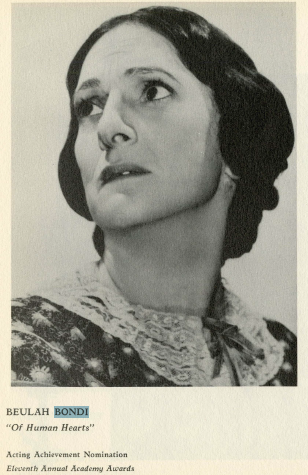
Bondi received recognition and accolades for her supporting roles, receiving commendation by the New York Times for her role in the 1939 film On Borrowed Time, in which she played opposite Lionel Barrymore. She was nominated for an Academy Award for Best Supporting Actress in 1936 for The Gorgeous Hussy and 1938 for Of Human Hearts. At the sunset of her career, Bondi received an Emmy award in 1977 for Outstanding Lead Actress for a Single Appearance in a Drama or Comedy Series for her portrayal as Aunt Martha on an episode of The Waltons.
The Vidette Messenger aptly concluded in 1976 that Bondi “deserves a place in the series of local celebrities-and unlike some who have gone off to conspicuous success in the entertainment world-she never belittled the town that was the scene of her childhood. She is a product of Valparaiso-and proud of it.” In her 80s, Bondi quipped to the newspaper that same year “‘I never played an actress my own age . . . I now play girls of 16.'” The acclaimed Hoosier passed away on January 12, 1981 in Hollywood, leaving behind a legacy of compelling silver screen characters.
